Over 90% of consumers read online reviews before even thinking of buying a product or service. It is widely understood that a single bad review is enough to offset 10 good ones. Honest, legitimate reviews left behind by real customers create an environment of transparency that differentiates quality businesses from less reputable ones.
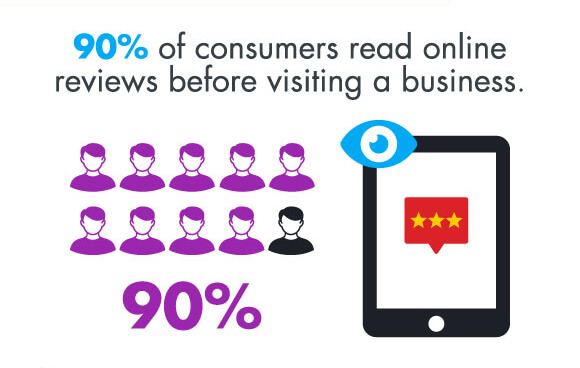
Yet in this very same environment, given the huge business that online reviews can drive, most reviews are falsified to either drive traffic to certain businesses or redirect traffic away from competitor websites. Besides Google’s online review system, you have to consider third party websites such as TrustPilot, the Better Business Bureau, Yelp, and in some cases, RipOffReport. Enough people on the internet have the motive to engineer fake reviews that you should start taking it seriously.
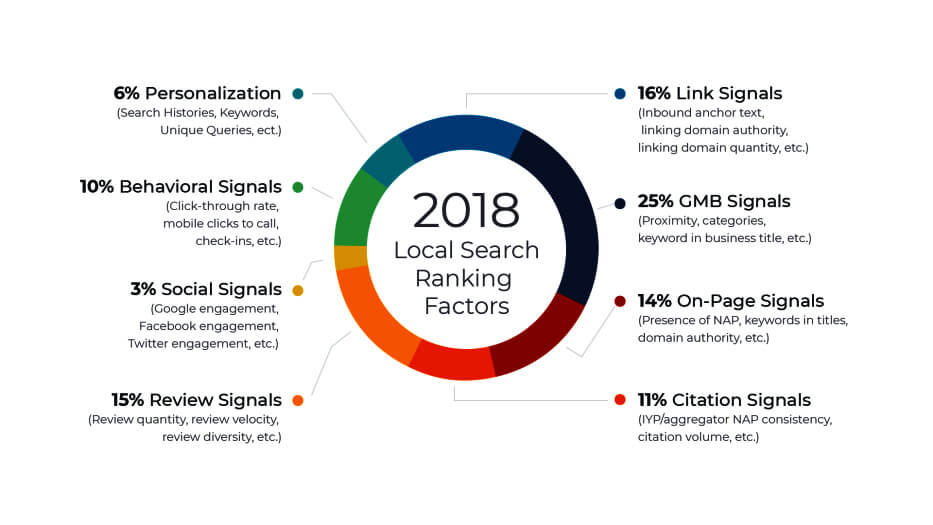
It is incredibly easy to create multiple fake profiles and type out negative reviews with little regard to the truth.
Making things worse is the fact that most of these websites refuse to take down fake reviews even after they are presented with evidence, case in point, Ripoff which refuses to remove negative reviews unless you have a court order. More reputable review sites, like Google and Yelp, allow you to remove fake reviews once they are reported.
The good news is that your hands are not tied and you can take control of your online reputation by following the right steps. You can use the table below to skip to different sections of the article if you want to save time.
Table of Content & Quick Links
1- How To Remove Fake Google Business Reviews
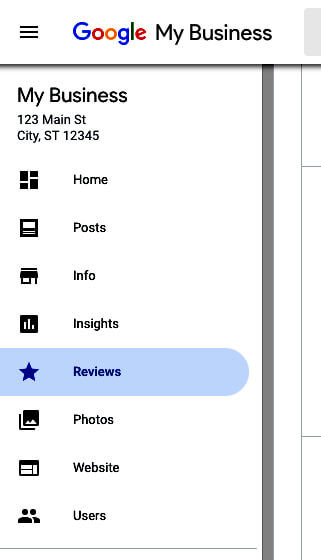
Your first step should be to respond to a fake review right away. It could be from a direct competitor or a spammer in some cases, it could even be from a disgruntled former employee who wants to cause irreparable damage to your company’s brand image. To combat this, you can flag the review.
This should only be done if you are certain the review violates Google’s review policies. Here’s how you can flag and dispute the review:
1. Sign-in to your Google My Business page (create one if you don’t already have a GMB page).
2. Choose the location of your business and navigate to Reviews from the menu.
3. Locate the reviews you want to flag,
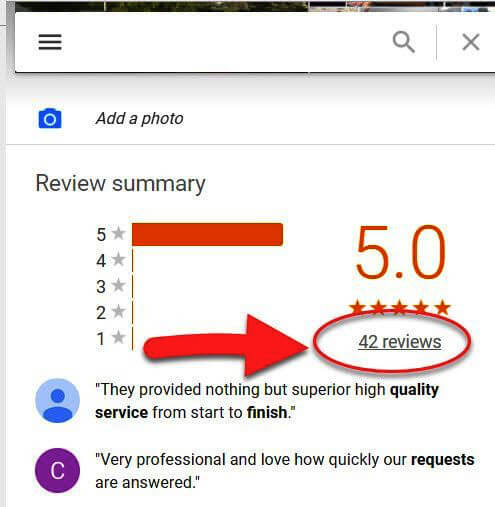
4. Click on the 3 dotted menu, then select “Flag as inappropriate”
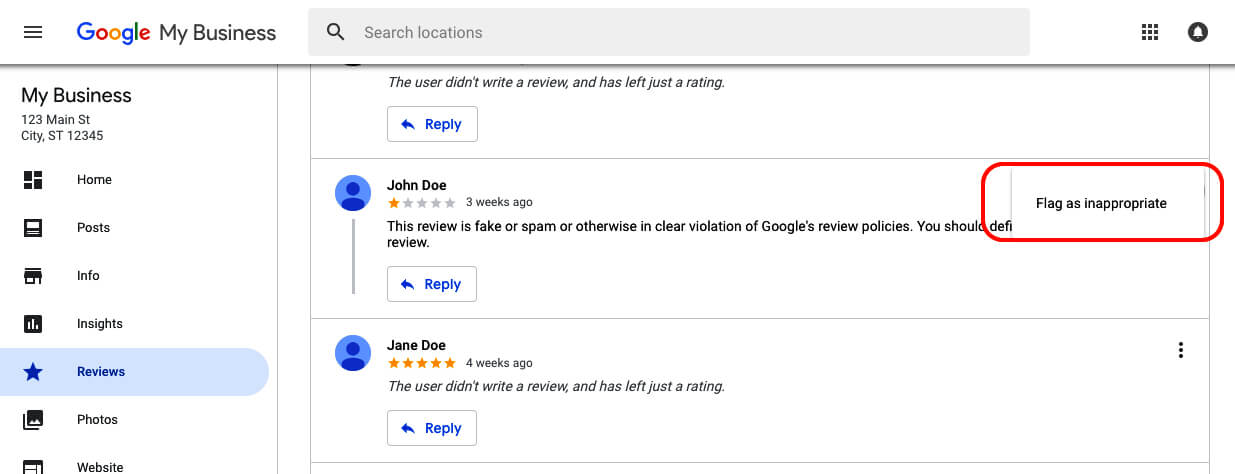
Make sure to respond immediately. Even though you know it is futile to respond to what you believe is a fake review on Google since the person’s intent is to deliberately harm you, you should still prepare a response politely. Doing this assures other potential customers that if they end up facing problems with your product or service, your service team will always try to sort things out. How you respond will play a bigger role in your reputation than the negative fake review.
Below is an example of a few responses to fake Google reviews:
“Hi, (Name of Reviewer), we take the quality of our services very seriously. We went through our records and can find no recollection of your account fitting the description of your reviews nor can we verify your identity from our records. If you are our client, we want to resolve this issue further, please contact (Team member’s name) at this (number of email address) so that we can address this issue immediately”.
2- Types of Reviews That Violate Google’s Content Guidelines
These are the 4 most common types of fake Google reviews that you can flag as inappropriate:
- Fake and spammy content: Google’s content guidelines stipulate that the content must be genuine. If you can prove that the content is spammy and fake, Google will remove it to improve your rankings.
- Prohibited Content: Google will remove any content that is illegal, offensive, dangerous, sexually explicit, or derogatory. This includes personal tirades against the business and hates speech.
- Conflict of Interest: Google makes it clear that you should not review your own business, your employer, or a competitor’s business.
- Off-Topic: To leave a review, the customer has to be on-point and relevant by sharing their experience with the business. Irrelevant content that discusses personal, political, or social experiences will also be removed. But for the most part, these reviews don’t do as much harm to your reputation as negative reviews.
If the Google Business Reviews fit the above descriptions, then you can flag them as inappropriate and hopefully get rid of them soon.
3- How to Spot a Fake Google Review
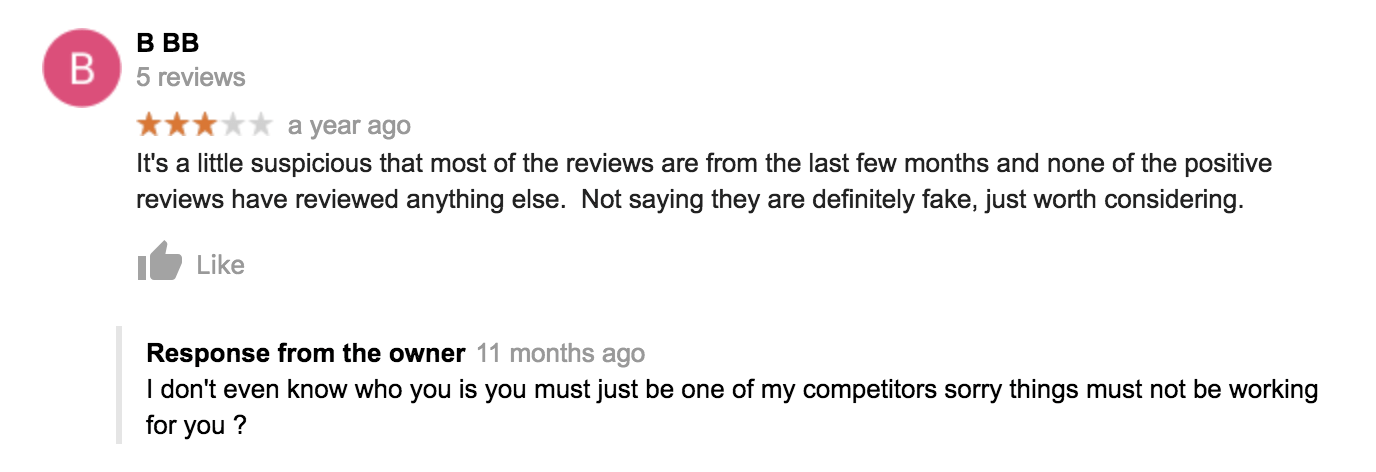
The most obvious step is to verify any sales records of the reviewer. If you can’t find any matching transactions, you’re probably dealing with a fake review. Here is a checklist to help you identify fake reviews:
- You do not have any business of transactions with this buyer
- The transaction date does not match with their complaint
- You can’t find any customer service calls
- No specific details provided (very generic rants that make no sense)
- You’ve started getting a surge of negative reviews
- Your competition seems to have a connection with the reviewer
- The reviewer has recommended your competitor in their complaint
- The reviewer’s account newly made and has no history of reviews with other companies
- Their avatar does not contain an actual picture of a real person
4- Requesting Google to Reach Out to You (to Speed Up the Process)
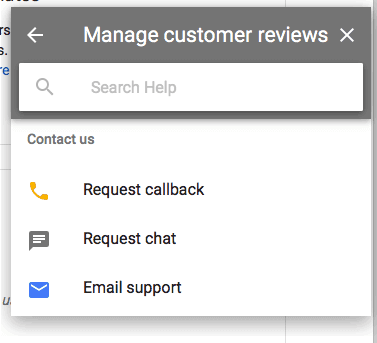
Google deals with millions of reviews daily, and your case may get lost in the queue. To speed things up, you can try to reach out Google’s customer support. Here’s how:
- On your GMB page, click on Menu, navigate below and click on Support.
- On the popup menu, click on Contact Us and then proceed to click on Need More Help.
- Next click on Customer Reviews and Photos and then Manage Customer Reviews
Choose from the three available options: request chat, request callback, and email support.
5- Contacting Google
If you don’t get a response from Google (or if it’s still taking too long), your next best option would be to write Google reviews to inspect the fake review and take appropriate actions. Although the chances of Google responding to your email are rare, you may find it to be worth a shot.
YOU CAN REACH THEM THROUGH THE FOLLOWING 3 METHODS:
5.1- Emailing
The email should contain information about the fake review and how it is negatively affecting your business. Make sure to add in as many details as possible as well as relevant screenshots to make your case stronger. Here is how you can contact Google through the mail.
- Step 1: Go to your GMB profile and click Menu.
- Step 2: Click on Support to prompt open another menu.
- Step 3: Click on “Need More Help” to view more options.
- Step 4: Click “Access and Ownership”
- Step 5: Select “Other Problem” from the list of available options.
- Step 6: Follow the onscreen instructions.
- Step 7: Hit “Email Support”
- Step 8: Draft your email and click send.
What follows is a waiting game.
5.2- Reaching Out to Their Twitter Team
Google also offers support through its Twitter handle. This is the easiest way to skip the long queue and grabbing their attention. Google’s GMB Twitter Handle was set up to keep users notified about the key updates, latest trends, and information about Google My Business.
Step 1: Follow their Twitter handle @GoogleMyBiz
Step 2: ‘Tweet’ or ‘Message’ your issue to their profile
Do keep in mind that the Twitter team is not available 24/7. You can reach them from Monday to Friday from 8 AM to 5 PM EST. You probably won’t get an instant response from them. Response times depend on how many other users have tried messaging the team before you. In most cases, you should be able to receive a reply within 1 to 2 days.
While talking to them through Twitter may not seem as effective as talking to them over the phone or live chat, you should still be able to alert them to your issue without having to wait several hours to wait for them to call you back.
5.3- Calling Them On Their Helpline
By using the support number provided by Google’s AdWords services, you can reach out to the team handing reviews of Google My Business pages. If you don’t have an AdWords account, the alternative would be to reach them through the worldwide phone support to explain your problem.
TIPS FOR CHATTING WITH GOOGLE PHONE SUPPORT
Now that you have reached out to Google their phone support, the following two tips will help you make the most of any phone call you happen to receive.
TIP 1
Google started offering its phone support since 2013. Since then they have been slowly outsourcing their support staff. Although the support staff is very helpful, they tend to follow a script and may not prove to be particularly useful if your problem happens to deviate from the script. Try to get representatives from California or Michigan since they are more experienced and don’t need to stick to the script to resolve your problems.
The best times to get a US representative is somewhere between 12:00 PM and 06:00 PM Pacific Time. For those of you living in the UK or Europe, try calling in the evening to reach US call centers.
TIP 2
Google’s phone support can assist you with most issues Google My Business. Try not to bring in issues that are not related to Google My Business because the representative simply won’t be able to help you in those cases.
Once you’ve reached Google staff, your objective should be to take full advantage of their services. Prepare your evidence beforehand and highlight all the important points of your argument to clearly explain your issues. Try to minimize confusion and present your argument clearly during the call.
6- How to Handle Negative Reviews
There’s a right way of doing things and a wrong way. The wrong way would be engaging in disorderly and loose conduct through name-calling and exchanging expletives. Even if the review is fake, it gives off bad vibes to potential customers who may think this is standard procedure for our business when dealing with disgruntled customers.
Use this as an opportunity to showcase excellent customer care to your customers even if you could not satisfy the person who left the negative review. Here’s how to make a successful rebuttal:
6.1- Respond on Time
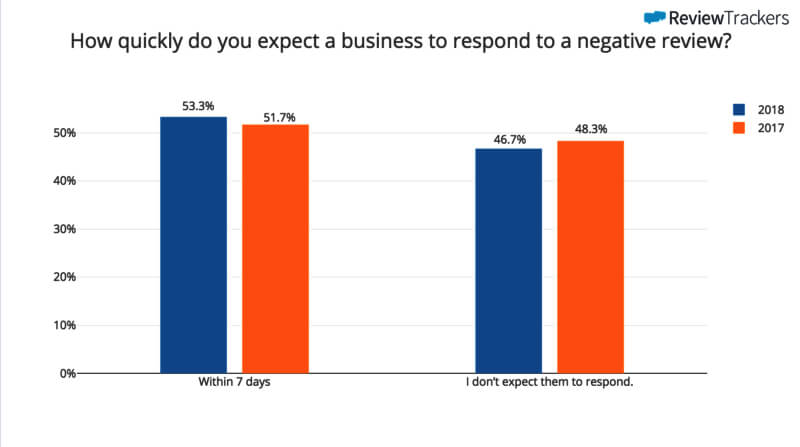
Try to respond to the negative review within a few hours of it being posted. Do not delay the rebuttal by more than a few days. The quicker you are to reply, the greater are your chances of converting a negative review to a positive one.
6.2- Maintain a Positive Attitude
Even though it doesn’t feel nice to be on the receiving end of what may amount to libel, it is upon you to maintain a positive, sincere, and friendly attitude even when responding to the negative review.
This sends a positive message to potential customers and even contributes to trustworthiness. It pays to have a few bad reviews alongside several good ones because it adds to the legitimacy of your business. After all, no business is perfect and there will always be a few angry clients here and there. If a business has 100% track records of positive reviews, then something is fishy!
6.3- Keep It Concise and Simple
Make sure your reply is concise and simple. No one wants to read giant walls of text. If you can write the rebuttal in 2 to 3 sentences while maintaining composure, then that should be your course of action. This encourages more people to read your rebuttal to the negative (or fake review).
7- Detailed Guidelines for Dealing with Negative Comments
Make sure to keep the following guidelines in mind before writing a review:
7.1- Express Empathy
Communicate to your clients that customer experience and satisfaction are an essential component of your services. Expressing empathy starts by acknowledging the problems or feelings that the customer went through because of the bad service. Below are a few statements that can be used in your response:
- “Thank you for letting us know about this issue”
- “We are extremely sorry you went through this issue”
- “Please accept our apologies for the inconvenience caused”
Statements like this show customers that you are willing to work on your services and may even resolve their issue.
7.2- Take Responsibility

After acknowledging the fact that the problem exists, it is important to accept responsibility for the part played by your business in the customer’s dissatisfaction. You can use the following statements below:
- “We didn’t meet your expectations”
- “Clearly mistakes were made on our end”
This shows an intent that you are willing to resolve the issue as soon as you possibly can. Your clients will appreciate your honesty.
7.3- Fix the Issue
Lastly, follow through with your previous statements by fixing the root cause of the problem. Give your clients access to the contact details of team members who can assist in resolving the issue. In some cases, it is best to offer a refund and hope that the client amends their review. Here are a few statements that you can use in your response
- “We would like to offer you a refund”
- “We will send a new product to replace the defective device. Please send us your contact details”
- “We will send our technician to fix the problem without taking any extra charges”
If your team does not have the resources to resolve the issue, then the next best thing would be to let your clients know this. You can use the following statements for this purpose:
- “We were unable to resolve your solution with services. However, we highly recommend using services from…”
- “Our team does not have the resources to address your problem at the moment. We would like to refund your paid amount.”
- “The concerned department has been alerted to your problem but they won’t be able to provide a solution. Please accept a refund instead and use/buy products from…”
Although this may send your clients to other businesses, at the very least, you can alleviate their problem. This shows that you care about customer satisfaction and would go to any lengths to help them.
8- Taking the Original Author to Court

Taking the original author to court over a negative review is an expensive path because of the huge financial commitment needed on your end. You will have to pay legal fees, attorney fees, and during the legal hearings, your brand’s image may be negatively affected, at least until the outcomes are revealed.
If your petition in court is successful and you manage to get a court injunction that orders the author to remove the review, you can then present this to Google. When it comes to directions from the court, Google does not laze around and will most probably remove the fake review from your Google My Business page. You can also present the court ruling to Yelp, TrustPilot, and Better Business Bureau to remove the fake review.
Ripoff Reports is one of the few companies that have a staunch policy on the non-removal of reviews, even after they have been proven to be false beyond the shadow of a doubt. Chances are that they will not remove the fake review even after court orders. Ripoff Reviews are not as reputable as they were a few years ago because search engines don’t use them to rank businesses and brands.
Word of advice: do not try to sue Google. Going up against the internet giant with infinitely more resources will end up doing more harm than good. For starters, Google has access to the best legal team money can buy. You don’t want to upset the most influential company in the world because it may end up barring you from their search engine results.
Google, like Amazon and Microsoft, likes to portray itself as a law-abiding company. Once they are given a court order to remove a fake review, they will in most likelihood remove the entire web page from their search results and display the following statement towards the bottom:
The same may be said about Bing, Yahoo, and even Yandex. Just make sure to focus all your energy on Google since commands the largest market share among all other search engines, and getting webpages with fake reviews delisted will be a huge victory for your brand.
9- What to Do When You Can’t Remove the Review
Most businesses simply won’t be able to remove the review unless they take the original author to court. This is pointless since court proceedings take time and money. If you have accrued negative reviews left behind by genuinely disappointed customers the best thing you can do is to improve your customer service and pushing down Google’s search engine results by promoting positive content.
This requires the adopting of SEO practices and content creation strategies. You can enlist the services of an SEO company that also specializes in reputation management – such as the one we provide – to hide negative posts.
It is also possible to do this yourself, but you will have to spend several hours writing them, and will likely have to follow up one long-form blog post after another. All articles and blog spots need to be optimized for different search engines, including Google and Bing. This requires ongoing effort and adapting your strategies when certain polices fail to produce any result.
9.1- Boosting Your Presence on Social Media
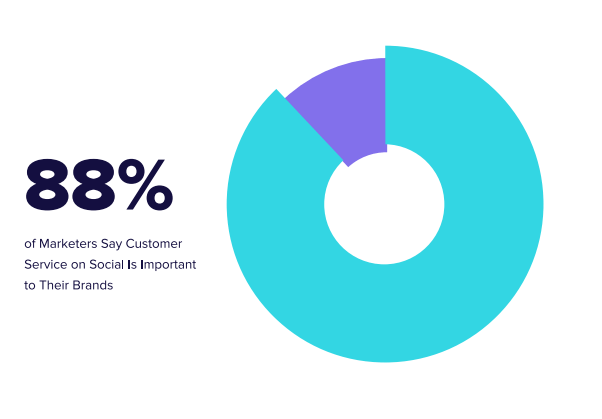
One of the most effective ways to manage Google reviews is to improve brand management through social media. This means becoming active on YouTube, Instagram, Facebook, Pinterest, and Twitter. You may need to hire the services of an experienced social media management teams to properly handle all your profiles. This opens up the different ways of communicating with your clients which inspires confidence and encourages new sales of products and services.
88% of marketers believe it is important to have social pages for their business.
Ask your customers to leave positive reviews on each social media page. The point is to create so much content that it offsets negative reviews. Being this accessible on the internet also makes you more trustworthy to customers. It gives you more than one means of protecting your brand’s reputation and monitors other businesses.
But before you can start removing negative reviews, you have to first actively monitor and fish out what is being said about your business in the various corners of the internet. If you are unaware that some negative reviews exist, you would find it tough to improve anything at all. Without access to the right tool, fighting negative reviews is like shooting the dark; your aim will almost always miss.
Monitoring your online reputation depends on your website’s business model. For instance, if you run a tourist operation, restaurant, hair salon, or similar business you will have to spend time monitoring online review sites such as Google Reviews, TripAdvisor, TrustPilot, and Yelp. If you run an online store that sells physical goods, you will have to keep an eye on TrustPilot (extremely important), BBB, Amazon, eBay, and any other online retailers that let customers write reviews.
Next in line are popular review sites, forums, indecent blog posts, news sites, and social media pages which are a dime a dozen these days. You can’t realistically hope to keep track of them all because your conversations will quickly become a problem depending on the scale of negative reviews left behind.
If you are relatively popular in online circles, you may need the help of online reputation management experts (and if possible, a team of them), to keep tabs about you on the internet. Most governments, celebrities, and political personalities adopt a similar strategy. If you are a CEO and want to manage your online visibility, you will need a different approach.
9.2- Use ReviewTrackers and GoFish Digital Complaint Search
ReviewTrackers manages online reviews of over 100+ sites and even lets you set up email alerts the moment someone mentions your brand. You can sign up for their mobile app to help you monitor online reviews and respond to them the moment they pop up.
GoFish effectively aggregates online reviews from different platforms spread across on the internet. It works alongside 40 of the most influential websites to let you monitor what is being said about you. GoFish is extremely important when it comes to brand management because Google and other search engines take them into account when ranking your web page.
GoFish provides you with a clean UI dashboard so you can easily find online reviews. The best part about GoFish is that it ranks reviews based on their importance so you can choose which ones to spend your time on and which ones to ignore.
9.3- Start “Review” Acquisition Campaigns
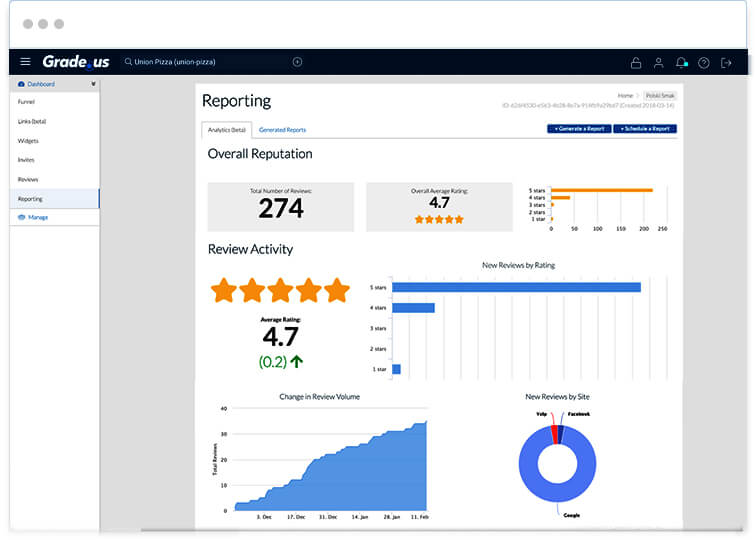
One bad review can undo 10 good reviews. This is why you should fight bad reviews with the good ones. Ask your customers and legion of happy fans to drop 5-star reviews to bury negative reviews deep. Just make sure to not unnecessarily pester your customers to write positive reviews, you may end up annoying them just enough to leave a couple of bad reviews!
The effective thing to do is to target all your customers via different channels, such as email, social media, and even text. This won’t be easy if you’ve got a whole lot of customers. The better thing to do instead is to utilize tools that let you inquire review acquisition campaigns, allowing you to request positive reviews from you’re the list of clients.
Grade.us is one such online tool that lets you send requests for positive reviews. You can also use the platform to monitor reviews and quickly respond to them via an app. You can let your clients know that you are easy to reach in case the service or product isn’t as good as they initially thought.




















